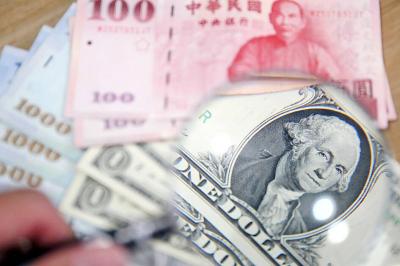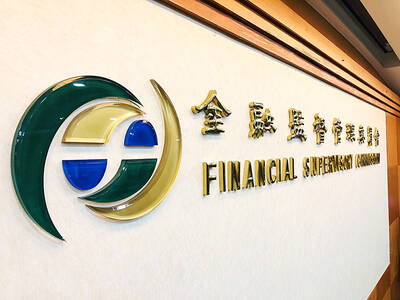Nobel laureates sometimes display as much ingenuity when deciding how to spend their prize money as they did on the work that won them the award in the first place.
When Sir Paul Nurse won the Nobel Prize for Medicine in 2001, he decided to upgrade his motorbike.
A fellow winner in 1993, Richard Roberts, installed a croquet lawn in front of his house. Austrian author Elfriede Jelinek, who won in 2004, said the prize meant “financial independence.”
This year’s awards get under way today, starting with the medicine prize and wrapping up a week later with the economics prize.
Once the frenzied media attention, formal appearances and ceremonies are over, this year’s Nobel laureates will also have to decide how to spend the 8 million kronor (US$1.25) prize money.
And judging from past experience, anything can happen. Sometimes they donate it to charity or scientific research, but that is by no means universal.
Nobel Foundation executive director Lars Heikensten said there were no obvious shopping trends among laureates.
“I think it depends a lot on which country they come from, their personal finances ... what kind of incomes they have when they get the prize, and where they are in life,” he said.
However real estate is a popular option, at least among those willing to reveal what they spend the money on.
More than a million dollars sounds like a lot, but it is often shared between several winners, diluting their Nobel spending power.
Wolfgang Ketterle at the Massachusetts Institute of Technology, who shared the 2001 physics prize with two colleagues, put his share towards a house and his children’s education.
“Since half goes to taxes in the US, there was nothing [more] left,” he said.
Phillip Sharp, the American co-winner of the 1993 medicine prize, decided to splash out on a 100-year-old Federal style house.
Deciding how to spend their money can take some time as new laureates are inundated with offers to attend meetings, lectures and inaugurations during their first year.
“I’ve not managed to think about the prize money. There have been great demands on my time,” said Serge Haroche, joint winner of last year’s physics prize, although he said he would probably look into real estate.
For winners of the peace prize the decision is often more clear-cut, as the honor tends to go to politicians, organizations and activists who are under more public scrutiny.
Many, like US President Barack Obama in 2009 and the EU last year, donate to charities.
Others support pet projects: the 2008 winner, former Finnish president Martti Ahtisaari, said he would finance a conflict resolution group he had set up.
Bangladeshi economist Muhammad Yunus, who founded the Grameen Bank — which gives loans to lift people out of poverty — said he would fund an eye hospital and a business making affordable food for the poor with his 2006 prize money.
However, there has been one notable exception to the charitable giving.
Then-US president Woodrow Wilson won the prize in 1920, but left it in a Swedish bank to earn interest, apparently because he was concerned about life after retirement in an age when former presidents got no government pension, according to one biography.

The US dollar was trading at NT$29.7 at 10am today on the Taipei Foreign Exchange, as the New Taiwan dollar gained NT$1.364 from the previous close last week. The NT dollar continued to rise today, after surging 3.07 percent on Friday. After opening at NT$30.91, the NT dollar gained more than NT$1 in just 15 minutes, briefly passing the NT$30 mark. Before the US Department of the Treasury's semi-annual currency report came out, expectations that the NT dollar would keep rising were already building. The NT dollar on Friday closed at NT$31.064, up by NT$0.953 — a 3.07 percent single-day gain. Today,

‘SHORT TERM’: The local currency would likely remain strong in the near term, driven by anticipated US trade pressure, capital inflows and expectations of a US Fed rate cut The US dollar is expected to fall below NT$30 in the near term, as traders anticipate increased pressure from Washington for Taiwan to allow the New Taiwan dollar to appreciate, Cathay United Bank (國泰世華銀行) chief economist Lin Chi-chao (林啟超) said. Following a sharp drop in the greenback against the NT dollar on Friday, Lin told the Central News Agency that the local currency is likely to remain strong in the short term, driven in part by market psychology surrounding anticipated US policy pressure. On Friday, the US dollar fell NT$0.953, or 3.07 percent, closing at NT$31.064 — its lowest level since Jan.

The New Taiwan dollar and Taiwanese stocks surged on signs that trade tensions between the world’s top two economies might start easing and as US tech earnings boosted the outlook of the nation’s semiconductor exports. The NT dollar strengthened as much as 3.8 percent versus the US dollar to 30.815, the biggest intraday gain since January 2011, closing at NT$31.064. The benchmark TAIEX jumped 2.73 percent to outperform the region’s equity gauges. Outlook for global trade improved after China said it is assessing possible trade talks with the US, providing a boost for the nation’s currency and shares. As the NT dollar

The Financial Supervisory Commission (FSC) yesterday met with some of the nation’s largest insurance companies as a skyrocketing New Taiwan dollar piles pressure on their hundreds of billions of dollars in US bond investments. The commission has asked some life insurance firms, among the biggest Asian holders of US debt, to discuss how the rapidly strengthening NT dollar has impacted their operations, people familiar with the matter said. The meeting took place as the NT dollar jumped as much as 5 percent yesterday, its biggest intraday gain in more than three decades. The local currency surged as exporters rushed to